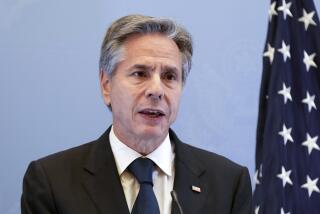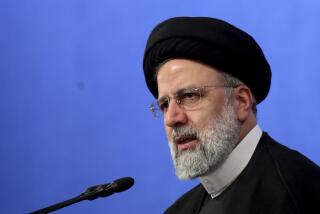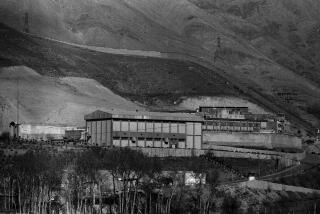Opinion: The Iran nuclear deal: a good outline -- but only an outline
At first glance, the outline of a nuclear agreement unveiled Thursday looks like a good deal for the United States and its allies.
It meets all the major goals President Obama and his aides have sketched out over the last few months. It reduces Iran’s enriched uranium to an amount and enrichment level lower than it would need for a nuclear weapon. It cuts the number of centrifuges Iran can operate from about 19,000 to 6,104, and stipulates that they cannot be advanced machines. It converts Iran’s underground facility at Fordow and its plutonium reactor at Arak to unthreatening uses. It opens Iran’s facilities – and, importantly, its entire “supply chain” for potential nuclear machinery -- to international inspection. And it maintains those limits for at least 10 years, many of them longer.
But that’s only a first glance. Over the next three months, as negotiators will try to work out the technical details, critics on both sides will pick the framework apart and look for weak spots – as well they should. American skeptics are already asking whether Iran will allow inspectors to see everything it’s doing, as the deal demands, and whether sanctions can ever be reimposed once they are relaxed. Iranian skeptics will question whether the U.S. Congress, which never misses an opportunity to take a swipe at Iran, will ever deliver the sanctions relief the deal promises.
Even in the short run, there will be plenty of opportunities for the deal to come off the rails. Iranian negotiators have been known to backtrack from commitments before. The details of implementation are vital, and haven’t yet been resolved. French Foreign Minister Laurent Fabius, one of the toughest negotiators, warned that more work is still needed on ways to reinstate sanctions if Iran fails to keep its word. So Secretary of State John F. Kerry was wisely cautious when he described Thursday’s agreement not as a deal, but merely “a consensus on the key parameters of an arrangement.”
Still, there were reasons to indulge in a moment of optimism. Iran’s state television broadcast President Obama’s announcement of the agreement live, an unusual decision for a network run by mullahs. It will be as important to watch the political reaction in Tehran as in Congress.
Speaking of which, Sen. Bob Corker (R-Tenn.), chairman of the Senate Foreign Relations Committee, said he will continue to insist that Congress weigh in on any deal. But he also appeared to signal that he is willing to give Kerry and his negotiators three more months to get one.
Beyond the specifics of the agreement, President Obama made two key points in his announcement. “This deal is not based on trust,” he said. “It’s based on unprecedented verification.” That promise of foolproof verification will be key.
And, as he has before, Obama argued that the key question wasn’t whether the deal would give the United States everything it wants – mainly, dismantling Iran’s entire nuclear infrastructure; it won’t. The question, he said, was how this deal compares with the real-world alternatives: military action that would only set back Iran’s nuclear work temporarily (at the cost of a new war), or an attempt to extend economic sanctions against Iran indefinitely, which most U.S. officials don’t think can be sustained. From that standpoint, he’s right: This looks like a good deal, if it can be made to work.
Follow Doyle McManus on Twitter @doylemcmanus and Google+
More to Read
Start your day right
Sign up for Essential California for news, features and recommendations from the L.A. Times and beyond in your inbox six days a week.
You may occasionally receive promotional content from the Los Angeles Times.







